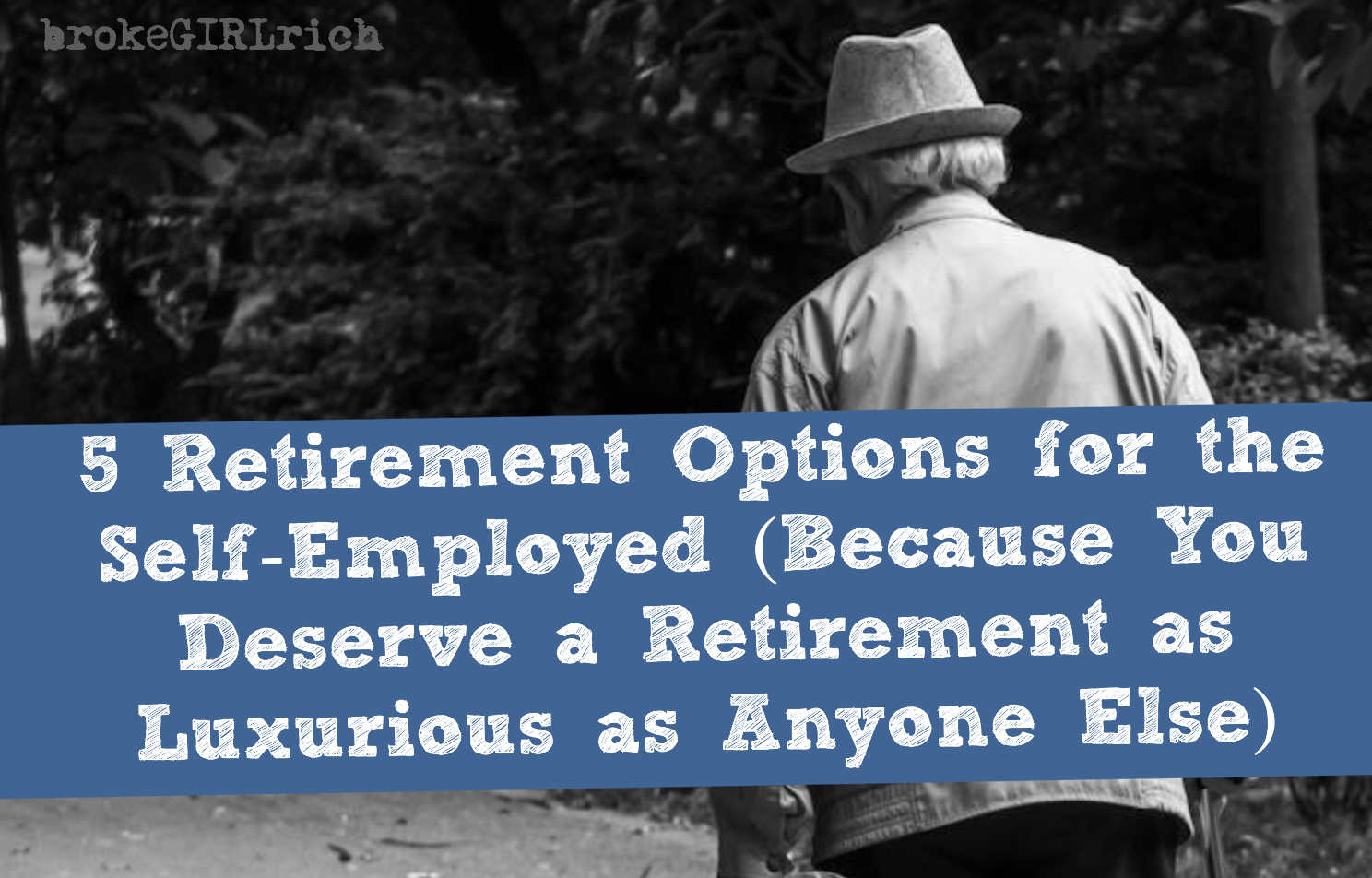
5 Retirement Options for the Self-Employed (Because You Deserve a Retirement as Luxurious as Anyone Else) | brokeGIRLrich
Most arts workers I know are freelancers, and if you’re a freelancer, gig worker, or proudly self-employed hustler, saving for retirement might sound like a mythical quest. But don’t worry, there are ways to set yourself up for that cushy retirement…or at least ensure you’re not subsisting solely on instant ramen (or living under a bridge in a cardboard box, which was a key motivation for me in starting this blog).
Here’s a rundown of five retirement options that’ll make saving as straightforward as managing your own business (and with fewer customer complaints).
1. Solo 401(k): The Big Kahuna of Self-Employed Retirement Plans
Perfect for: Freelancers or single-owner businesses who want to contribute a ton to their retirement (up to $68,000 in 2024 if you’re under 50).
As the name suggests, the Solo 401(k) is just for you (and your spouse if you’re super generous). It lets you be both the employee and the employer, meaning you can contribute up to $23,000 as the “employee,” and then match that with up to 25% of your income as the “employer.” It’s like giving yourself a high-five with a fistful of retirement cash.
If you’re making bank and want to stash more, this is a solid pick. Just be prepared for a little paperwork once your account hits $250,000. But hey, it’s a good problem to have, right?
2. SEP IRA: The Chill Retirement Plan
Perfect for: Small business owners or freelancers who like their paperwork as light as their schedule on Friday afternoons.
The Simplified Employee Pension (SEP) IRA is as laid-back as they come. You can contribute up to 25% of your net earnings from self-employment (up to $68,000 in 2024), and if you have employees, you’ll need to contribute equally for them, too.
The best part? Zero annual reporting requirements. Set it up, contribute when you can, and relax. It’s the hammock of retirement accounts.
3. Simple IRA: Simple, Just Like the Name Says
Perfect for: Solopreneurs or small business owners with a few employees.
If you’re looking for a plan that’s as simple as possible (but with a touch of employer-employee flair), the SIMPLE IRA might be your best bet. In 2024, you can contribute up to $16,000, and if you’re over 50, you get an extra $3,500 to play with.
Here’s the catch: there’s a mandatory employer contribution, either matching up to 3% of your employee’s salary or a flat 2% no matter what. So if you have employees, make sure you’re ready to put a little skin in the game for their retirement, too.
4. Roth IRA: The Hip, Tax-Free Option
Perfect for: The future planner who thinks taxes will only go up from here.
You can only contribute up to $7,000 per year (or $8,000 if you’re over 50), but the beauty of the Roth IRA is that it’s funded with after-tax dollars, which means when you’re retired, all those sweet earnings are yours to keep, tax-free. You’re basically setting up a tax-free piggy bank for your future self.
However, there’s an income limit: if you’re making over $153,000 as a single filer or $228,000 as a married couple in 2024, you’ll need to look at other options on this list (or meet with a tax pro who can point you to loopholes).
5. Traditional IRA: The Go-To Classic
Perfect for: The no-frills saver who just wants a straightforward plan.
This is the classic vanilla option of retirement accounts. You contribute pre-tax money, which means you get a tax break now, but Uncle Sam will want a piece of the action once you’re ready to cash in. In 2024, you can contribute up to $7,000 (or $8,000 if you’re over 50).
If you don’t make a lot of income in some years, this can be a simple and effective way to save while reducing your current tax burden. And hey, there’s a good chance you’ll be in a lower tax bracket in retirement, so it could work out in your favor.
A Few Tips for Self-Employed Retirement Success
- Start Small – You don’t have to max out contributions right away. Even small, regular contributions make a big difference over time. Think of it like watering a plant; someday, it’ll grow into something beautiful.
- Stay Consistent – Treat retirement savings like a regular bill. Set up auto-deposits or transfer a small percentage of each paycheck to your retirement fund.
- Treat Yo’ Future Self – Just imagine retirement: lounging around, maybe even taking up golf. Every dollar you save now is a step closer to that bliss.
Saving for retirement as a self-employed person isn’t always easy, but with these options, it’s possible to create a plan that works for you. The key is finding the plan that fits your lifestyle, income, and level of paperwork tolerance. So pick one, get started, and give Future You a round of applause. They’re going to be so grateful!



